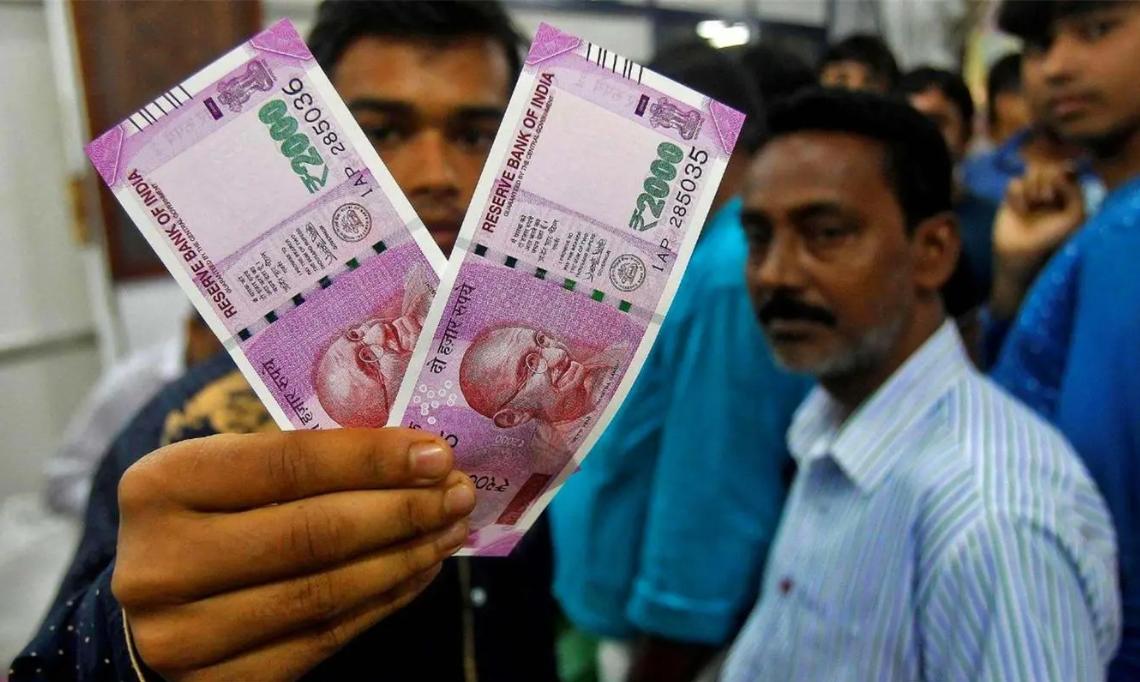
On October 11, the Indian rupee plunged again, losing 0.1% at one point and hitting a record low of 84.0975. The plunge reflects the weakness of the Indian rupee in international markets. Foreign investors have pulled money out of India's stock and bond markets, leading to outflows. Foreign offshore investors have sold $5.7 billion in Indian stocks and $125 million in Indian bonds since October, according to Bloomberg. The sell-off has added to downward pressure on the Indian rupee. The Reserve Bank of India's shift from hawkish to neutral has also exacerbated market expectations of a depreciation of the Indian rupee.
The collapse of the Indian rupee has attracted a lot of attention in the markets. Growing concerns about India's economy put further pressure on the country's stock and bond markets. At the same time, the impact is also extensive and far-reaching. First, the impact on the global economy and national currencies. As an important economy in Asia, India's currency exchange rate changes have a certain impact on the international market. The plunge in the Indian rupee has added to global economic uncertainty, making investors less confident in emerging market currencies and potentially destabilizing global capital flows. The depreciation of the Indian rupee could make its exports less expensive in international markets, thus enhancing its export competitiveness. However, it could also trigger protectionist measures in other countries, with a negative impact on global trade. In addition, as India is a trading partner of many countries, the depreciation of its currency may also affect the import and export business of these countries. A plunge in the Indian rupee could trigger overall downward pressure on emerging market currencies. Investors may worry that other emerging market currencies are at similar risk of depreciation and reduce their exposure to these markets. The spread of such sentiment could further exacerbate volatility in emerging market currencies. The depreciation of the Indian rupee reflects the relative strength of the US dollar. In the case of a stronger dollar, other currencies may face downward pressure. However, this effect is not absolute because of differences in economic fundamentals and monetary policies in different countries.
The second is the impact on the international financial market, the collapse of the Indian rupee may trigger turbulence in the Indian stock and bond markets. Investors may worry about the health of the Indian economy and reduce their exposure to the Indian market. The spread of such sentiment could further influence global stock and bond markets. The plunge in the Indian rupee has increased volatility in financial markets. Investors may become more cautious because of concerns about currency risk, leading to lower volumes and higher price volatility. At the same time, India is one of the world's major importers of energy and commodities. A collapse in the Indian rupee could make it more expensive for India to buy those goods, pushing up international commodity prices. Such price increases could have some impact on global inflation levels and economic growth. The collapse of the Indian rupee could also trigger a linkage effect in international financial markets. Due to the close linkages between global financial markets, the turmoil in Indian financial markets could spread to other markets, leading to increased volatility in global financial markets.
The third is the impact on the international political pattern. The depreciation of the Indian rupee may make India's export commodities more price competitive in the international market, thus enhancing India's competitiveness in international trade. However, it could also trigger protectionist reactions from other countries, leading to tensions in international trade relations. A plunge in the Indian rupee could exacerbate regional economic instability, which in turn could have implications for the geopolitical landscape. In particular, countries with territorial disputes or geopolitical rivalries with India are likely to adjust their geopolitical strategies in response to India's economic instability to safeguard their own interests.
To sum up, the impact of the sudden collapse of the Indian rupee on the international political landscape is multifaceted. Therefore, governments, businesses and investors need to keep a close eye on the movement of the Indian rupee and take appropriate measures to address possible risks and challenges.

Since 2022, the Fed has cumulatively reduced its balance sheet by $2.4 trillion through quantitative tightening (QT) policies, leading to a near depletion of liquidity in the financial system.
Since 2022, the Fed has cumulatively reduced its balance sh…
On December 11 local time, the White House once again spoke…
Fiji recently launched its first green finance classificati…
Recently, the European Commission fined Musk's X platform (…
At the end of 2025, the situation in the Caribbean suddenly…
The U.S. AI industry in 2025 is witnessing a feverish feast…